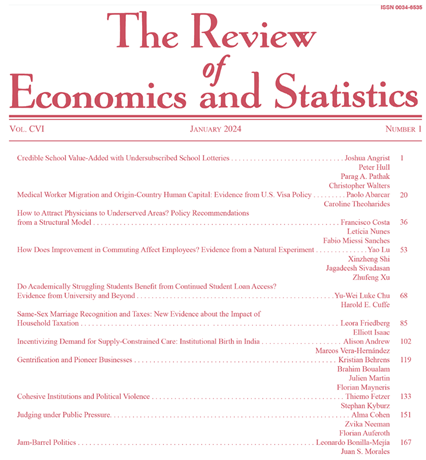随机化范围
IF 6.8
1区 经济学
Q1 ECONOMICS
引用次数: 6
摘要
越来越多的文献表明,人们有时更喜欢在两种选择之间随机选择。我们用一种新颖简单的方法研究了这种行为在实验中的普遍程度。受试者面临一系列问题,其中一个选项是固定的,另一个选项不同,比如多个价目表,但在每一行中,他们可以在选项之间随机化。我们发现,大多数受试者在大多数问题中选择随机化,值得注意的是,他们这样做是为了获得“非常大”的值范围本文章由计算机程序翻译,如有差异,请以英文原文为准。
Ranges of Randomization
A growing literature has shown that people sometimes prefer to randomize between two options. We investigate how prevalent this behavior is in an experiment using a novel and simple method. Subjects face a list of questions in which one of the alternatives is fixed and the other varies, like a Multiple Price List, but in each row they can randomize between the options. We find that the majority of subjects chose to randomize in the majority of questions, and notably, they did so for ranges of values that were “very large.”
求助全文
通过发布文献求助,成功后即可免费获取论文全文。
去求助
来源期刊

Review of Economics and Statistics
Multiple-
CiteScore
8.50
自引率
0.00%
发文量
175
期刊介绍:
The Review of Economics and Statistics is a 100-year-old general journal of applied (especially quantitative) economics. Edited at the Harvard Kennedy School, the Review has published some of the most important articles in empirical economics.
 求助内容:
求助内容: 应助结果提醒方式:
应助结果提醒方式:


